Capsule Review: Jaguar XJ 3.0 AWD
It doesn’t take a genius to figure out which of the Jaguar Land Rover partnership is the breadwinner. People cannot get enough Evoques, LR4s and Range Rovers, even though the competition can do pretty much everything else in a more competent fashion, for less money. But at least Land Rover stands for something.
Never mind the snide remarks about the Kardashians and McMasions in my prior piece. Land Rovers have fought in wars, kept the peace, carted around countless dignitaries and monarchs and been to the kind of places that require vaccinations before you depart. And people remember that.
What about Jaguar? How many people still remember them for the E-Type versus their history of questionable reliability? I’d place my money on the latter being the brand’s defining characteristic that doesn’t have to do with their country of origin. Watching the XJ make an appearance in the latest James Bond movie, I was struck by how appropriate it was for M to be chauffeured in a dark colored XJ (note to Jaguar: get Bond in an F-Type next time around), but I doubt many people shared my sentiments. That’s a shame because there is a fair amount of history linked with the XJ and the various institutions of the United Kingdom as there is with Land Rover. Think of Margaret Thatcher leaving number 10 Downing Street after being ousted by her own party or Tony Blair arriving at Princess Diana’s funeral if you need examples.
The current shape XJ (now employed by David Cameron) was an enormously polarizing design when it debuted in 2009, and a good part of that sentiment had to do with the fact that the XJs had undergone mild, 911-style evolution in the preceding decades, during which they were the ride of choice for all manner of British VIPs. The 2005 redesign that introduced an all-new aluminum construction was barely distinguishable from the generation before that. Meanwhile, BMW had introduced the Bangle-look 7-Series and Audi’s A8 was starting to get some traction among luxury buyers. Sales were unsurprisingly dismal, and the radical change in design was deemed necessary.
Personally, I love the look, even if its more French than British. To me, it recalls the profile of the Citroen C6, with the quirky French styling cues replaced by a masculine, squared-off stance. Unlike the supercharged V8 versions, this one doesn’t have absurdly sized shiny rims, but the design doesn’t suffer for it the way that some cars, like Bangle BMWs and current Audis, look a bit wonky when devoid of big dubs.
The big news for the XJ this year is the addition of all-wheel drive and a new supercharged 3.0 V6 engine. The two drivetrain options come bundled together, as a response to the twin desires of more modest fuel consumption and improved winter-weather traction. Since it was 25 degrees and sunny for most of the week, I didn’t get a chance to try out the all-wheel drive system.
Alex Dykes last clocked a blown V8 Supersport at 4.3 seconds to 60 mph, and based on my own impressions of that car, I’d concur. It is a seriously fast set of wheels. Not having the capability to do instrumented testing, I will have to take Jaguar’s estimate of 6.1 seconds for the V6 car at face value – but I’d never complain that the V6 felt slow. The reluctance of the 8-speed automatic to downshift upon applying the throttle was noticeable, but once the transmission complied, there was no shortage of power available. Fuel economy in mixed driving was roughly 23 miles per gallon – not much better than the 21.5 mpg Alex managed with his Supersport, but I suppose some of the blame – and the appeal of the 3.0 – could be pinned on the AWD system.
Thanks to its aluminum construction, the XJ feels light on its feet. The chassis is a credit to JLR’s engineers, which managed to strike a balance between providing engaging handling while isolating the car’s occupants from the road surfaces, especially poor ones. The lack of big rims and low profile tires also play a part in delivering such good ride quality.
The one blight on this car is the Start-Stop feature, which was far from unobtrusive. I don’t have any philosophical opposition to these systems, but myself and several other passengers noted that the system was rather abrupt in cutting power and re-starting the engine; certainly, it operated in a manner that was inconsistent with the overall supple, isolating nature of the car’s ride and NVH characteristics. Some of TTAC’s Europe-based commenters have been skeptical of the efficacy of these systems with respect to fuel economy, but North Americans have had little exposure to them. I expect many will elect to disable this system.
Although the somewhat clumsy infotainment system is shared with the Range Rover, the rest of the interior is all Jaguar. Gone is the black plastic and the aluminum looking trim, replaced by acres of wood and dead bovine hyde. Your eyes will forget about the rather lackluster digital gauge cluster and instead gravitate to the long, arcing section of wood that spans from A-pillar to A-pillar just above the dashboard. When these cars end up as one of Murilee’s Junkyard Finds, I will be going into the carcass of an XJ and extracting this piece to hang in my future garage.
While I criticized the Range Rover for not offering much above and beyond its rival aside from a great badge, there are plenty of compelling reasons to pick an XJ over its rivals. There is an argument to be made for the Audi A8 being a more precise drive, but I prefer the increased isolation and the wood-and-leather cabin of the XJ compared to the more austere Audi – or any of its rivals. Since I’m not overly concerned with tech features, the Jag’s superior road manners give it the edge over the 7-Series, S-Class or LS460 in my books. At an as-tested price of $86,000, it’s neither the cheapest or the priciest car in its class.
Jaguar hasn’t been associated with the “Grace, Pace and Space” mantra in some time, this car would be the perfect manifestation should they ever decide to use that as the brand’s messaging. There is no shortage of power, comfort or elegance, and as far as I’m concerned, it’s the most beautiful 4-door car on sale today. But judging by recent sales figures, more people are choosing the A8 – at least the addition of all-wheel drive gives them one less excuse for ruling out the XJ.
More by Derek Kreindler
Latest Car Reviews
Read moreLatest Product Reviews
Read moreRecent Comments
- ToolGuy 9 miles a day for 20 years. You didn't drive it, why should I? 😉
- Brian Uchida Laguna Seca, corkscrew, (drying track off in rental car prior to Superbike test session), at speed - turn 9 big Willow Springs racing a motorcycle,- at greater speed (but riding shotgun) - The Carrousel at Sears Point in a 1981 PA9 Osella 2 litre FIA racer with Eddie Lawson at the wheel! (apologies for not being brief!)
- Mister It wasn't helped any by the horrible fuel economy for what it was... something like 22mpg city, iirc.
- Lorenzo I shop for all-season tires that have good wet and dry pavement grip and use them year-round. Nothing works on black ice, and I stopped driving in snow long ago - I'll wait until the streets and highways are plowed, when all-seasons are good enough. After all, I don't live in Canada or deep in the snow zone.
- FormerFF I’m in Atlanta. The summers go on in April and come off in October. I have a Cayman that stays on summer tires year round and gets driven on winter days when the temperature gets above 45 F and it’s dry, which is usually at least once a week.



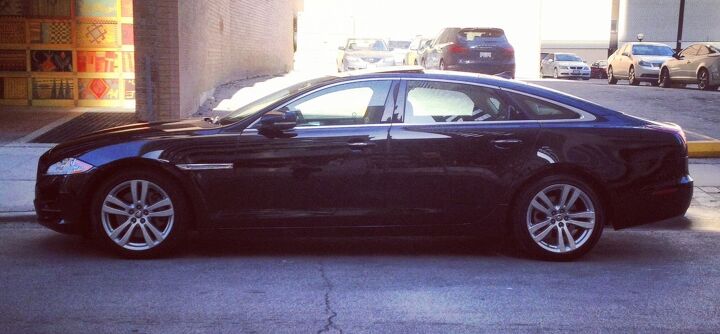















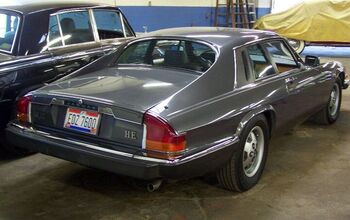
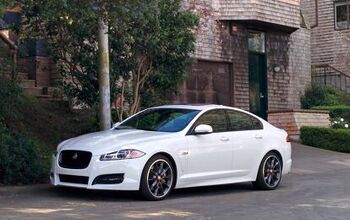

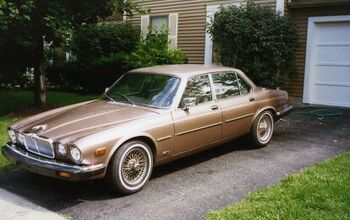
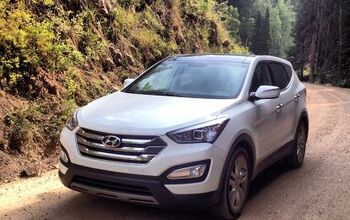
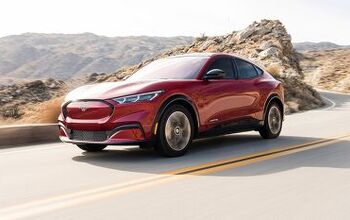









Comments
Join the conversation
The problem for Jaguar is that there are just not alot of people who want this kind of car vs. a lux SUV. That's why they are suffering. A millionare friend of mine was trying to decide between a Porsche Panamera and a Cayenne. Of course a Pananmera is more sporty when it comes down to actual performance on a track. But in the real world a Cayenne is plenty capable - and has the high view and high ride height that his wife loves. (It also makes it easier to deal with car seats). In short the bulk of big luxo drivers is old white men - who remember such cars from their youth.. But its just fallen out of favour. Younger rich people just aren't interested. Its too big to be even a sporty luxo cruisers and not practical enough to be a family luxo mobile.
The XJ seems to be the car that autojournos always reccomend but nobody actually buys. Those that do invariably stick a leaper on the hood, though.